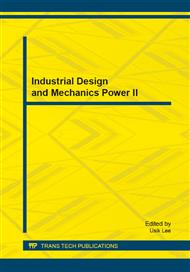p.335
p.341
p.346
p.353
p.358
p.362
p.366
p.373
p.377
Experimental Investigation on Damage to Protective Materials of Spacecrafts Caused by Laser-Shockwave-Driven Flyer
Abstract:
Aluminum flyer with thickness of 50μm and diameter of 1mm had been driven successfully by high-power Nd:Glass laser system. Average speed of the flyer was detected by piezoelectric Polyvinylidene Fluoride (PVDF) transducer, which reached 6.67km/s. Extent of damage to protective materials of spacecrafts was studied after they were hit by the driven aluminum flyer. The protective materials of spacecraft were damaged structurally in our experiment, and the damage observed under the microscope was also shown. It could be seen that the flyer knocked a tiny hole with diameter of about 1mm in the protective cellular board, and there were traces of impact damage around the tiny hole, which indicated that protective materials of spacecrafts would be damaged structurally when they were hit by flyer with size of 1mm. At the same time, the hyperspeed flyer still had good integrity and flatness. The results showed that laser-shockwave-driven hyperspeed flyer technology could be used as an effective experiment means to simulate high-speed space particles, which made it feasible to establish a set of simulation device of laser-shockwave-driven hyperspeed flyer for the research of protective materials of spacecrafts on the ground.
Info:
Periodical:
Pages:
358-361
Citation:
Online since:
October 2013
Keywords:
Price:
Сopyright:
© 2013 Trans Tech Publications Ltd. All Rights Reserved
Share:
Citation:


